There is nothing like the taste of food that has been cooked over an open fire. It doesn’t matter if it’s the first hot dog you cooked at a backyard fire pit as a kid or the steak you grilled last night. Cooking over an open flame is special. I feel at times it’s a way to connect to our ancestors that didn’t have microwaves or even stoves. Just some meat, a fire, and a stick to cook the meat on. This is where I bring up the title of my video Learn Not to Burn.
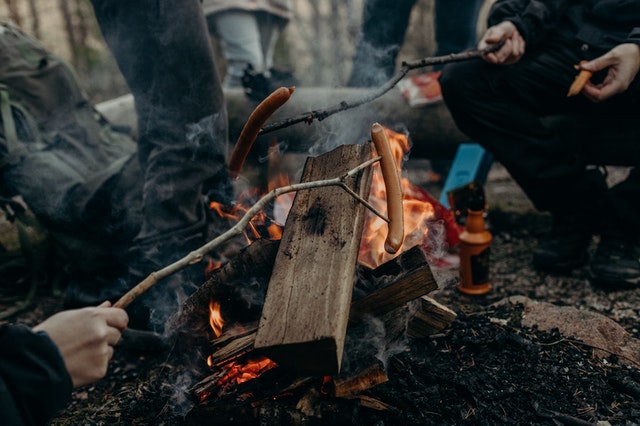
No one wants to burn their food, but unfortunately the way we grew up sticking a hot dog into the flames till its charred is not the proper way to cook your food over a fire. It may have been exciting as a kid, but if you are in a survival situation, this is not the culinary path you want to take.
Cooking Over an Open Flame is Not Desirable
Cooking over a flame is not the best way to do it. Let me clarify that this is when no pots or pans are being used. An open flame is inconsistent in its heat. All the flickering that gives a fire its appeal is visual evidence that the heat is constantly fluctuating. For cooking, you want a relatively constant heat.
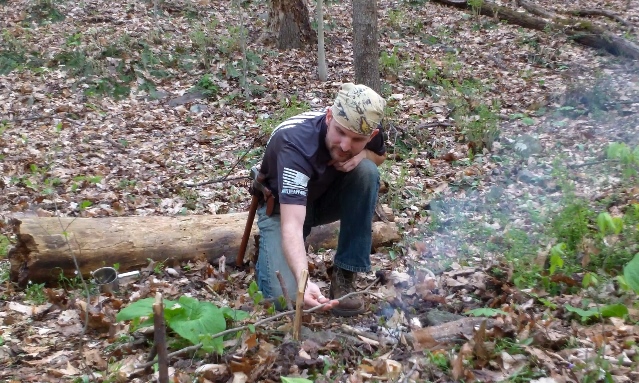
You may have noticed that a few times when you cooked a hot dog the outside was charred but the inside was still cool. This is another example of the fluctuating temperatures. Cooking food, especially meat, takes time.
Related article: Salvaging Meat that is Past its Prime
Quick, high heat just burns the outside leaving the inside raw, whereas long, sustained heat will cook the food all the way through. In the example of the hot dog or marshmallow, this is not a big deal. Hot dogs are already cooked and even if you were to under cook a steak from the grocery store you most likely would not be in any real danger.
Cast Iron is Your Friend
There’s a reason pioneers carried cast iron cookware. It’s not quite bushcraft, but if you have access to it, cast iron is your friend. Not only is it virtually indestructible, it distributes heat evenly. This is particularly useful cooking over inconsistent fires.
If you have the time, and money is tight, one of the best ways to buy cast iron cookware is at lawn sales and flea markets. They may take some cleaning up, some re-seasoning, but you’ll save money. Alternatively, you can buy five-piece seasoned cookware right on Amazon. Add to that a cast iron tripod for cooking, and you’ll be well on your way to cooking quality meals deep in the forest, at your campsite, or right in your backyard.
Cooking Wild Meat in the Wild
Now, let’s talk about the food we catch, trap, and hunt from the wild. Animals in the wild are not USDA approved (USDA grading of meat). Wild meat, as I will call it from now on, can have parasites, pathogens and other undesirables in it. Am I saying that wild meat is dangerous? No, but steps need to be taken to ensure that the wild meat is prepared safely for consumption. Just like we boil water for a minute or two to kill off any pathogens in it, the same needs to be done with wild meat. This means that we must subject the pathogens in the wild meat to high temperatures for an extended period of time to kill them off.
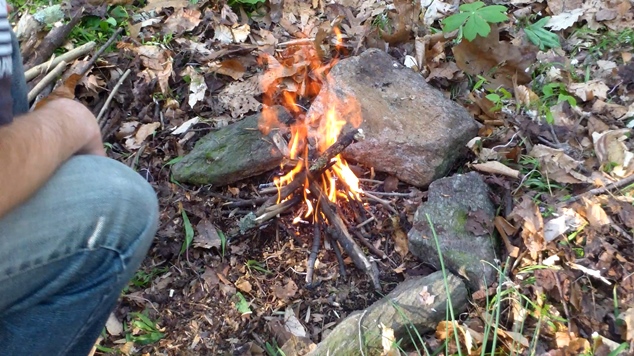
Essentially, we are making sure to cook the wild meat all the way through or as some call it, well done. To accomplish this and not have a burnt, charred husk of meat at the end of the stick we must learn not to burn and use the coals of the fire instead.
Use the Coals, Not the Fire
The coals of a fire give off the most constant amount of heat and as we have all felt and observed are extremely hot. By cooking over the coals of the fire we can hold the wild meat at a certain height above the coals and ensure that it will be cooked slowly all the way through.
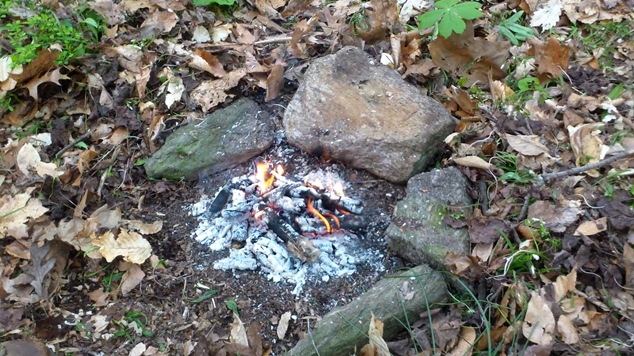
As you will see in the video, I use a couple of sticks to do the work for me. Like I said earlier, cooking meat takes time and devising a way to not have to hold it the entire time will be beneficial. The three-stick setup I show is useful but hanging meat from a tripod or other set up will work just as well.
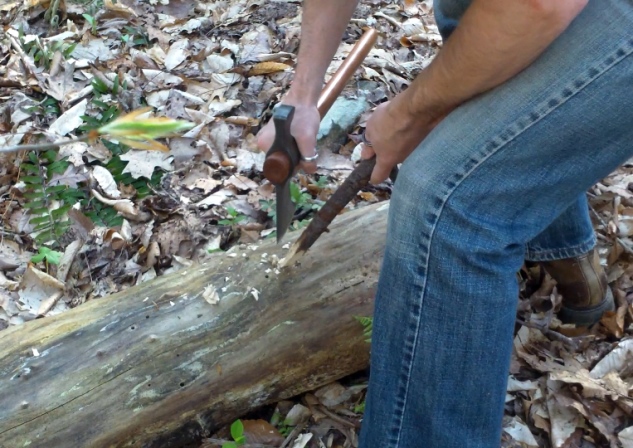
Just remember to rotate wild meat to ensure that its cooked through, and to use live wood for any part that is over or near the fire. Live wood, since it still has all its moisture, will not burn up as quickly as dead wood.
Other Benefits of Cooking Over Coals
Cooking over coals has some other benefits. Less light and smoke is produced so if stealth is necessary this will aid in keeping a low profile. Coals are also quite easy to feed and keep going. Simply putting some dried wood next to or on the coal pile will be sufficient enough to keep it fueled.
By learning not to burn our food, we not only ensure that the wild meat that we are preparing is safe to eat and taste good, but that the maximum amount of nutrients in that food is not wasted. Burnt food does not contain as many nutrients and properly cooked food. Although we might not worry about nutrients and calories when we are at a backyard barbecue, in an emergency situation, those same calories and nutrients could be the deciding factor in your survival. Learn not to burn, kill the pathogens, and enjoy a good meal.
Check out the accompanying video and enjoy!

1 comment
Very useful camping hack!